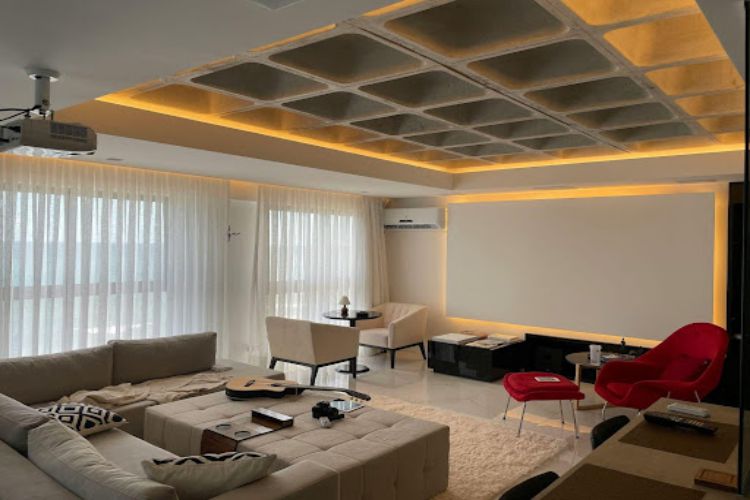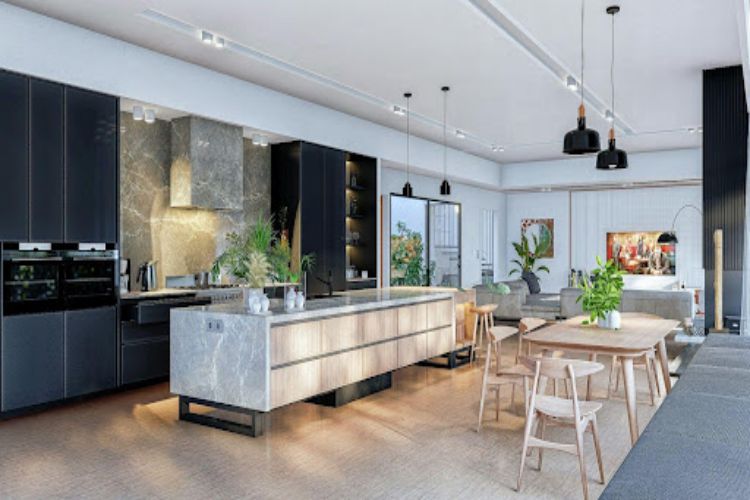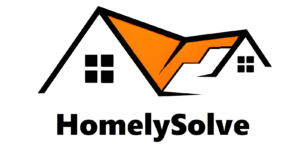Looking for new house design tips? This guide offers practical advice on budgeting, location selection, professional collaboration, and more. Get the insights to make your home planning straightforward and stress-free.
Establish a Detailed Budget
The foundation of any successful home-building project is a detailed budget. This crucial step helps prevent financial surprises and keeps the project on track from start to finish. Creating a realistic budget is essential to ensure you don’t run into unexpected expenses that could derail your dream.
A comprehensive budget should include not just construction costs but also soft costs like design fees, permits, and other ancillary expenses. Detailed planning helps avoid underestimating the true cost of building a home. Allocating 7-10% of your construction budget as a contingency fund can cover unexpected expenses during the building process.
To manage construction costs and align expectations effectively:
- Engage early with quality builders to clarify construction costs and set expectations.
- Communicate frequently with your architect about design estimates to ensure your budget aligns with your vision and to prevent costly changes.
- Prioritize essential design elements during the planning stage to avoid unnecessary cost increases.
A detailed construction document is another critical tool for minimizing errors and misunderstandings during the construction process. Detailing finishes and fixtures in advance leads to more accurate cost estimates and prevents budget overruns. Remember, a well-planned budget is your roadmap to a successful and stress-free home builder experience.
Choose the Right Location
Choosing the right location for your new home is one of the most critical decisions in the home-building process. The location of your property significantly affects its value and development potential. When selecting a location, consider factors such as:
- Land cost
- Accessibility
- Amenities
- Community regulations.
Central locations in established cities typically have higher property values due to limited land availability. However, buying properties on busy roads may offer lower initial costs but could complicate future resale efforts. Balancing the initial cost with potential long-term benefits is crucial.
Neighborhoods with good transport links and schools tend to be more desirable for homebuyers. Future developments in an area, such as new schools and public infrastructure, can enhance property values and make your own home a wise investment. The proximity of a lot to essential amenities like grocery stores and parks can positively influence its value.
Lower crime rates and appealing outdoor spaces contribute to a neighborhood’s attractiveness. Considering future resale value can guide homeowners in selecting timeless and appealing finishes that appeal to a broad audience. Properties with permitted renovations tend to have higher resale values and attract more buyers in an older home.
 Collaborate with Architects and Interior Designers
Collaborate with Architects and Interior Designers
Collaborating with architects and interior designers from the beginning of your interior design project can streamline the timeline and reduce unnecessary delays. Start designing by engaging these professionals early on, which facilitates quicker decision-making regarding design elements and helps ensure that your vision is realized efficiently throughout the design process.
A unified communication channel between you, your architect, and your interior designer is crucial for reducing misunderstandings and ensuring that critical information isn’t overlooked. This collaboration can also decrease costly mistakes and changes during the construction phase by addressing potential issues early on.
Selected materials and finishes should create a cohesive design to achieve a harmonious look. Working with both professionals allows for more thoughtful designs that adapt to changes without compromising functionality.
Integrating smart technology into your home design can create a seamless experience, combining aesthetics with functionality. Close collaboration with architects and interior designers ensures every aspect of your home, from the floor plan to the finishing touches, meets your expectations and needs.
Optimize Natural Light and Ventilation
Maximizing natural light and ventilation is key to creating a bright, airy, and energy-efficient home. Consider the following:
- The orientation of rooms should ideally face south, east, or west to maximize natural light and airflow.
- Careful placement of windows is crucial.
- Larger windows should be oriented towards the sun’s path in colder climates to maximize warmth.
In warmer climates, consider the following to improve comfort and reduce heat buildup:
- Avoid large windows facing direct sunlight to reduce heat buildup.
- Opt for windows that allow diffused light to enter.
- Include open transitional spaces like courtyards or balconies to enhance both natural light and ventilation, making your home more comfortable and inviting.
Furniture arrangement plays a significant role in optimizing natural light. Ensure that your furniture does not block sunlight from entering through the living room windows, allowing every room to benefit from natural light. Utilizing lighter paint colors on walls can help reflect natural light, creating a brighter living space.
Additionally, water features like fountains or ponds can cool the air around your home, improving indoor climate and comfort. Incorporating these elements thoughtfully into your design creates a home that is both beautiful and energy-efficient.
Prioritize Energy Efficiency
Prioritizing energy efficiency in your home design is crucial for long-term savings and environmental sustainability. Building from the ground up with better insulation enhances energy efficiency and reduces utility bills. Using energy-efficient construction materials can lead to significant cost savings for homeowners.
Smart thermostats are a great investment, as they reduce energy use when the home is unoccupied, optimizing heating and cooling. Energy-efficient appliances can save between 10-50% more energy compared to traditional models, making them a wise choice for any home. LED lightbulbs can lower lighting energy consumption by up to 75%, contributing to overall efficiency.
Key energy-saving options include:
- Smart thermostats: reduce energy use when the home is unoccupied by optimizing heating and cooling
- Energy-efficient appliances: save between 10-50% more energy compared to traditional models
- LED lightbulbs: lower lighting energy consumption by up to 75%
Smart HVAC systems can use up to 50% less electricity than conventional systems, greatly reducing energy costs. Solar panels installations can lead to significant savings over their lifetime, making them a valuable addition to any home.
For those in Tasmania looking to maximize their energy independence, considering solar panels installers in Hobart can be a smart move to harness renewable energy. Properly insulating your attic can reduce heating and cooling expenses by up to half.
Plan for Future Needs
Planning for future needs is essential when designing a home that will grow with you and your family. Designing for universal accessibility involves features like wide doorways and step-free entries to accommodate all residents. This foresight ensures that your home remains functional and accessible for years to come.
Planning for potential marriage and family growth allows for appropriate sizing of living spaces. Homes with flexible floor plans can be easily reconfigured to adapt to changing family sizes and needs. Adequate storage solutions are critical in versatile homes to maintain organization as family needs change.
Using sustainable materials and energy-efficient systems supports both environmental goals and long-term cost savings. Future-proofing designs by anticipating and accommodating emerging smart technology trends is essential for longevity in home design. Considering these factors ensures your home is both beautiful and adaptable to your evolving lifestyle.
Create Functional Spaces
 Creating functional spaces is a cornerstone of effective home design. Mudrooms serve as a crucial entry point for families, often used for quick exits and entries, necessitating efficient design. A well-designed mudroom includes dedicated storage solutions for each family member to streamline daily activities.
Creating functional spaces is a cornerstone of effective home design. Mudrooms serve as a crucial entry point for families, often used for quick exits and entries, necessitating efficient design. A well-designed mudroom includes dedicated storage solutions for each family member to streamline daily activities.
Storage solutions like open cubbies and benches in mudrooms help maintain organization while providing easy access to frequently used items. Functional mudroom elements include durable benches and hooks that cater to the everyday comings and goings of family members.
Tech storage design in mudrooms is increasingly important, allowing for designated charging stations for devices and electrical outlets. Most families universally need custom mudroom cubbies when building a new home. Placing the mudroom strategically in the layout improves flow and cleanliness in the house.
A hybrid mud room-laundry room maximizes space, allowing for efficient organization of both laundry and outerwear.
Focus on Flow and Layout
Good flow in a home design enhances usability and creates a welcoming atmosphere. Analyzing and addressing flow issues can lead to more efficient and inviting living spaces. Traffic flow involves how people move through areas, requiring sufficient space for comfortable passage and a natural flow.
Reconfiguring a layout can significantly improve the flow of a home by:
- Removing walls to open up spaces.
- Incorporating natural elements, like large windows, to connect indoor spaces with the outside.
- Creating distinct zones within open spaces to maintain functionality while enhancing flow, including the use of moving walls.
Family needs, lifestyle, and floorplan flow are important considerations when planning room layouts in a new home. Every room must create a welcoming atmosphere. Additionally, they should be easy to navigate. Separating the living room and kitchen while maintaining connection is key in room layout.
Modern home design often includes centralized kitchens open to family spaces, reflecting the home’s style. An increase in communal areas and clear sightlines is a significant trend in modern house layouts compared to older homes, emphasizing the importance of open space.
Select High-Quality Materials and Finishes
Choosing durable and high-quality materials is fundamental for ensuring the longevity and functionality of your home. Select materials and finishes based on the overall style, your budget, and the functional needs of the space. For humid regions, it’s recommended to use engineered wood floors, which resist moisture better than traditional wood.
In the kitchen, splurging on high-end appliances and cabinets can significantly enhance both functionality and the overall aesthetic.
Selecting quality materials and finishes ensures that your home not only looks great but also stands the test of time.
Beyond initial selection, remember that proper maintenance is key to preserving their beauty; for instance, regular professional carpet cleaning services in Melbourne can keep your carpets looking new and extend their lifespan, protecting your investment in high-quality flooring.
Integrate Smart Home Technology
Incorporating smart home technology enhances convenience and ensures homes can evolve with technological advancements. Smart home technology encompasses internet-connected devices that automate and optimize home functions, enhancing user convenience. Smart lighting solutions can be controlled wirelessly, offering convenience and energy savings by eliminating the need to manually turn lights off.
Smart home devices offer several benefits:
- Smart thermostats learn user habits to optimize heating and cooling, helping reduce energy consumption and lower utility bills.
- Remote control capabilities allow homeowners to manage settings while away, boosting security and efficiency.
- Home security systems, including smart cameras and sensors, enhance safety by providing real-time monitoring and alerts.
A centralized control hub is vital for managing multiple smart home devices efficiently, improving user experience. Integrating smart technology into your home design ensures your dream home is both beautiful and cutting-edge.
Pay Attention to Outdoor Living Areas
Outdoor living areas are an extension of your home and deserve just as much attention as indoor spaces. Incorporating shade structures, like pergolas or awnings, can significantly enhance outdoor comfort and usability. Using durable outdoor furniture that withstands the elements can help maintain the aesthetic and functionality of outdoor spaces.
Ways to enhance outdoor areas include:
- Incorporating fire pits or outdoor kitchens to transform spaces into functional gathering areas.
- Landscaping with native plants to create a harmonious environment while requiring less maintenance.
- Lighting outdoor spaces effectively to enhance ambiance and safety during evening gatherings.
Thoughtfully designing your outdoor living areas created a space perfect for relaxation and entertainment, adding value and enjoyment to your life dreams.
Obtain Necessary Permits and Adhere to Building Codes
Necessary permits and adherence to building codes are crucial for the success of your construction project and are a must-have. Key points include:
- Having proper permits protects homeowners from potential legal issues and liability claims.
- Obtaining permits is one of the first steps to prepare for construction.
- Failure to obtain permits can complicate insurance claims, particularly in the event of damage or accidents.
Researching local building regulations is key before starting any construction project. Permits are essential for ensuring compliance with safety and structural integrity standards. By following the correct procedures, you can ensure that your dream home is built safely and legally.
Summary
In summary, designing your dream home involves careful planning, collaboration, and attention to detail. Establishing a detailed budget, choosing the right location, and working with professionals are foundational steps in the process. Prioritizing energy efficiency, planning for future needs, and creating functional spaces ensure that your home is both sustainable and adaptable.
Focusing on flow and layout, selecting high-quality materials, and integrating smart home technology enhance the usability and longevity of your home. Paying attention to outdoor living areas and obtaining necessary permits guarantee that your home is not only beautiful but also compliant with all regulations.
Embark on this journey with confidence, knowing that every step you take brings you closer to creating the home of your dreams. Your dream home awaits!
Frequently Asked Questions
Why is establishing a detailed budget so important in the home-building process?
Establishing a detailed budget is essential to avoid financial surprises and keep your home-building project on track. It helps you account for all costs, including construction, design fees, permits, and unforeseen expenses.
What factors should I consider when choosing the location for my new home?
When choosing a location for your new home, focus on land costs, accessibility, local amenities, community rules, and any upcoming developments, as these will impact your property’s value and livability. It’s all about finding the perfect balance that fits your lifestyle!
How can collaborating with architects and interior designers benefit my home project?
Working with architects and interior designers can really enhance your home project by keeping everything on track and preventing expensive mistakes. By teaming up, you ensure a smooth design process and a beautifully coordinated result.
What are some ways to optimize natural light and ventilation in my home?
To optimize natural light and ventilation in your home, orient rooms to face south, east, or west, strategically place windows, and use light paint colors to reflect sunlight. Keep furniture arranged to avoid blocking light and create open spaces for better airflow.
How can I ensure my home is energy-efficient?
To make your home energy-efficient, invest in good insulation, smart thermostats, and energy-efficient appliances. Plus, consider adding solar panels and switching to LED lightbulbs for even greater savings!

